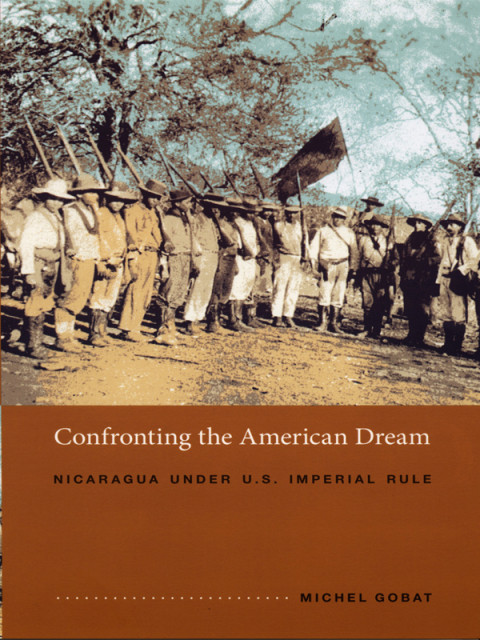

Most ebook files are in PDF format, so you can easily read them using various software such as Foxit Reader or directly on the Google Chrome browser.
Some ebook files are released by publishers in other formats such as .awz, .mobi, .epub, .fb2, etc. You may need to install specific software to read these formats on mobile/PC, such as Calibre.
Please read the tutorial at this link. https://ebooknice.com/page/post?id=faq
We offer FREE conversion to the popular formats you request; however, this may take some time. Therefore, right after payment, please email us, and we will try to provide the service as quickly as possible.
For some exceptional file formats or broken links (if any), please refrain from opening any disputes. Instead, email us first, and we will try to assist within a maximum of 6 hours.
EbookNice Team

Status:
Available4.5
39 reviews
ISBN-10 : 0822387183
ISBN-13 : 9780822387183
Author: Michel Gobat, Gilbert M. Joseph, Emily S. Rosenberg
Michel Gobat deftly interweaves political, economic, cultural, and diplomatic history to analyze the reactions of Nicaraguans to U.S. intervention in their country from the heyday of Manifest Destiny in the mid–nineteenth century through the U.S. occupation of 1912–33. Drawing on extensive research in Nicaraguan and U.S. archives, Gobat accounts for two seeming paradoxes that have long eluded historians of Latin America: that Nicaraguans so strongly embraced U.S. political, economic, and cultural forms to defend their own nationality against U.S. imposition and that the country’s wealthiest and most Americanized elites were transformed from leading supporters of U.S. imperial rule into some of its greatest opponents. Gobat focuses primarily on the reactions of the elites to Americanization, because the power and identity of these Nicaraguans were the most significantly affected by U.S. imperial rule. He describes their adoption of aspects of “the American way of life” in the mid–nineteenth century as strategic rather than wholesale. Chronicling the U.S. occupation of 1912–33, he argues that the anti-American turn of Nicaragua’s most Americanized oligarchs stemmed largely from the efforts of U.S. bankers, marines, and missionaries to spread their own version of the American dream. In part, the oligarchs’ reversal reflected their anguish over the 1920s rise of Protestantism, the “modern woman,” and other “vices of modernity” emanating from the United States. But it also responded to the unintended ways that U.S. modernization efforts enabled peasants to weaken landlord power. Gobat demonstrates that the U.S. occupation so profoundly affected Nicaragua that it helped engender the Sandino Rebellion of 1927–33, the Somoza dictatorship of 1936–79, and the Sandinista Revolution of 1979–90.
Part I . Manifest Destinies, 1849-1910
1 . Americanization through Violence Nicaragua under Walker
The Initial Encounter
Embracing Walker’s Filibusters
Walker’s Rise to Power
Walker’s Revolution from Above
The “National” War
Conclusion
2: Americanization from Within Forging a Cosmopolitan Nationality
Reembracing Americanization
Forging a Cosmopolitan Nation-State
Challenging Cosmopolitanization
The Agroexport Boom
The Rise of a “Bourgeois Spirit”
Shattered Dreams
Conclusion
Part II . Restoration, 1910-1912
3: Challenging Imperial Exclusions Nicaragua under the Dawson Pact
The Religious Debate: Divided Elites, Unruly Women, and Rebellious Artisans
Reimagining the Nation: The Campaign against the U.S.-Nicaraguan Loan Treaty
“Aristocrats” versus “Bourgeois”: The Conflict over Elite Status
On the Brink of Revolution: Hunger and the Spread of Social Violence
Conclusion
4: Bourgeois Revolution Denied
For Liberty, Equality, and Autonomy: Revolutionary Nationalists on the Attack
Revolutionary Violence as a “Social War”
Between Accommodation and Resistance: Encountering the U.S. Invaders
Conclusion
Part III . Dollar Diplomacy, 1912-1927
5: Economic Nationalism Resisting Wall Street’s “Feudal” Regime
Modernization via the Mixed Commission
Confronting Wall Street’s Antimodern Impact
Economic Vanguard as the Embodiment of Backwardness
Embracing Intervention
Economic Nationalism’s Limited Appeal
Conclusion
6: Anxious Landlords, Resilient Peasants Dollar Diplomacy’s Socioeconomic Impact
Growth without Development
Promoting Peasant over Estate Production
“Democratizing” Rural Class Structures
Conclusion
7: Cultural Anti-Americanism The Caballeros Católicos’ Crusade against U.S. Missionaries, the “Modern Woman,” and the “Bourgeois Spirit”
From Liberal Conservatives to Caballeros Católicos
Defending a Catholic Nicaragua
Campaigning against the “Modern Woman”
Redefining Elite Masculinity and the Nation
Conclusion
Part IV . REVOLUTION, 1927-1933
8: Militarization via Democratization The U.S. Attack on Caudillismo and the Rise of Authoritarian Corporatism
Imposing Democracy
Militarization
Embracing Authoritarian Corporatism
Speaking for the “People”
Conclusion
9: Revolutionary Nationalism Elite Conservatives, Sandino, and the Struggle for a De-Americanized Nicaragua
Elite Conservatives’ Shifting Relations with Sandinismo, 1927-1932
“A Community of Interests and Ideas”
Embracing Mestizaje
The Puzzling Nonencounter
The Final Break
Conclusion
Epilogue . Imperial Legacies Dictatorship and Revolution
Dictatorship
Revolution
The Price of Empire
Notes
what does the american dream mean to you
challenging the american dream
confronting the holocaust american responses
confrontational dreams
criticism of the american dream
Tags: Confronting, the American Dream, Nicaragua, US Imperial Rule, Michel Gobat, Gilbert Joseph, Emily Rosenberg